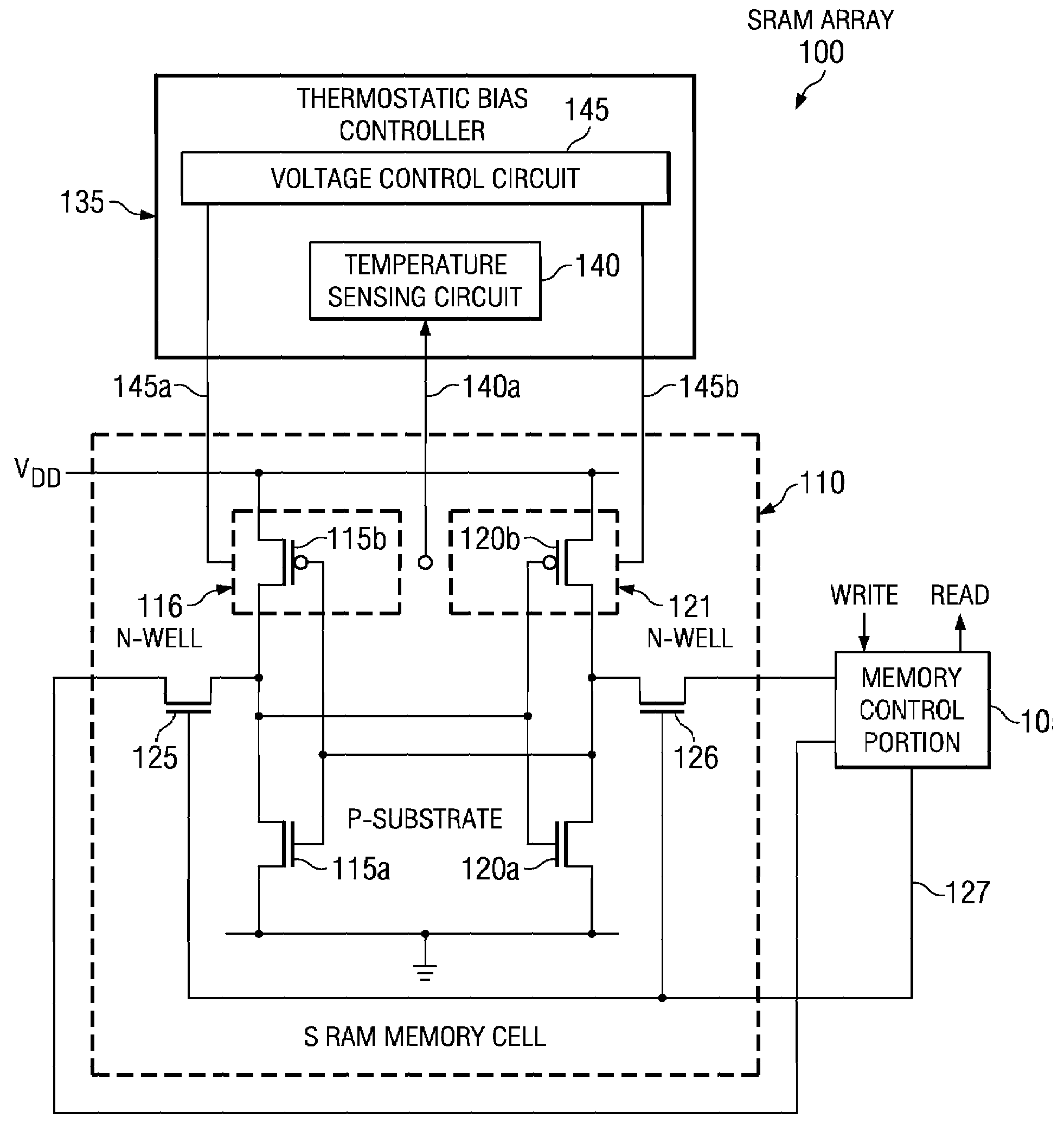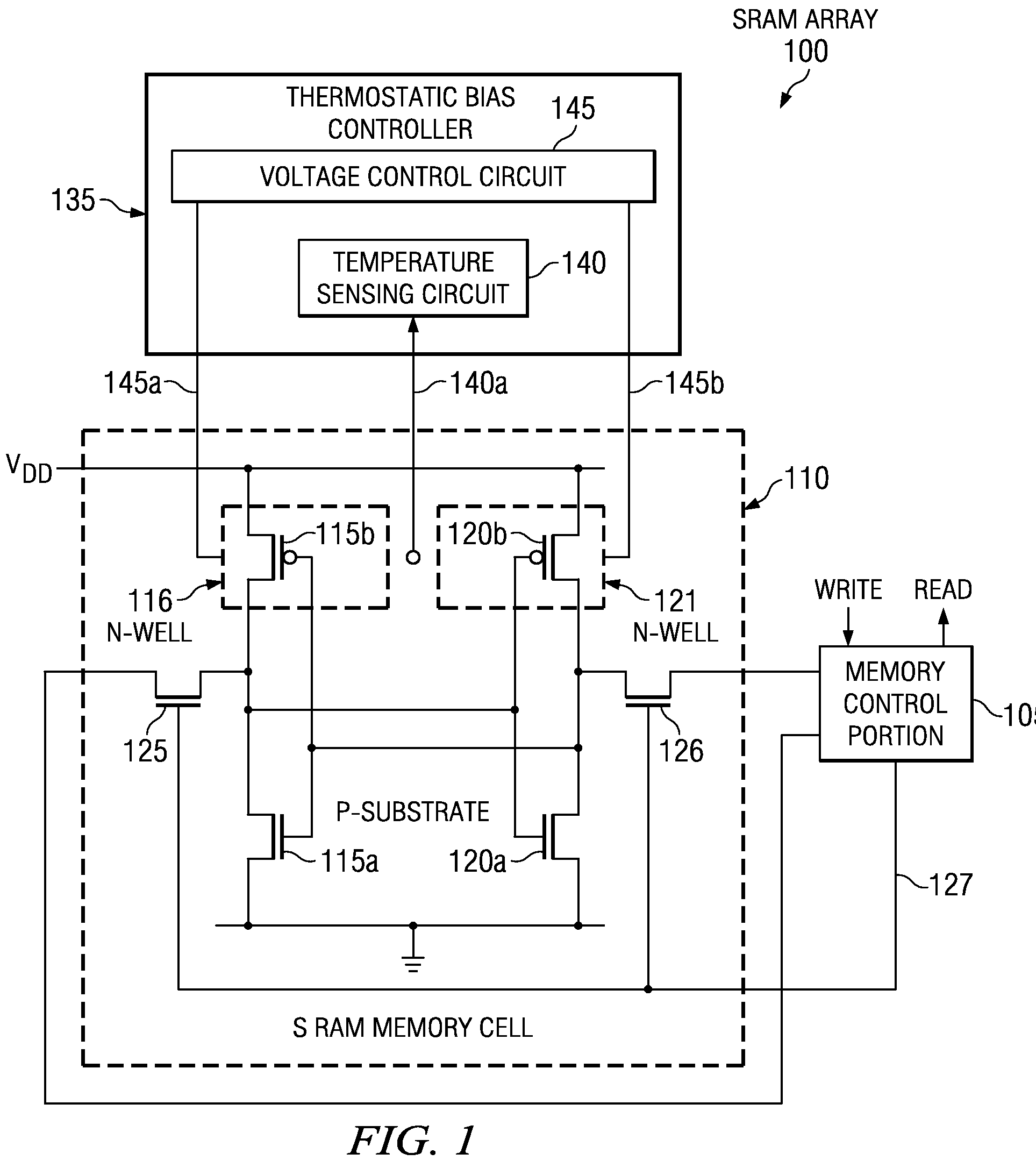Temperature dependent back-bias for a memory array
a memory array and temperature-dependent technology, applied in static storage, digital storage, instruments, etc., can solve the problems of imbalance at high temperature, sram design becoming increasingly difficult to have robustness,
- Summary
- Abstract
- Description
- Claims
- Application Information
AI Technical Summary
Benefits of technology
Problems solved by technology
Method used
Image
Examples
Embodiment Construction
[0021]FIG. 1 illustrates an embodiment of an integrated circuit 100 constructed according to the principles of the present invention. The integrated circuit 100 includes a memory array, which is an SRAM array in the illustrated embodiment. The SRAM array has a plurality of SRAM memory cells, wherein a SRAM memory cell 110 is typical, that are coupled to a memory control portion 105. The memory control portion 105 provides read / write access for the SRAM array. The SRAM memory cell 110 consists of first and second CMOS inverters 115a / 115b and 120a / 120b that are cross-coupled to form a memory element, as shown. First and second NMOS transistors 115a, 120a operate as pull-down transistors, and first and second PMOS transistors 115b, 120b operate as pull-up transistors. The SRAM memory cell 110 also includes first and second n-wells 116, 121 that contain the first and second PMOS transistors 115b, 120b and are formed in a p-substrate containing the first and second NMOS transistors 115a,...
PUM
 Login to View More
Login to View More Abstract
Description
Claims
Application Information
 Login to View More
Login to View More - R&D
- Intellectual Property
- Life Sciences
- Materials
- Tech Scout
- Unparalleled Data Quality
- Higher Quality Content
- 60% Fewer Hallucinations
Browse by: Latest US Patents, China's latest patents, Technical Efficacy Thesaurus, Application Domain, Technology Topic, Popular Technical Reports.
© 2025 PatSnap. All rights reserved.Legal|Privacy policy|Modern Slavery Act Transparency Statement|Sitemap|About US| Contact US: help@patsnap.com



